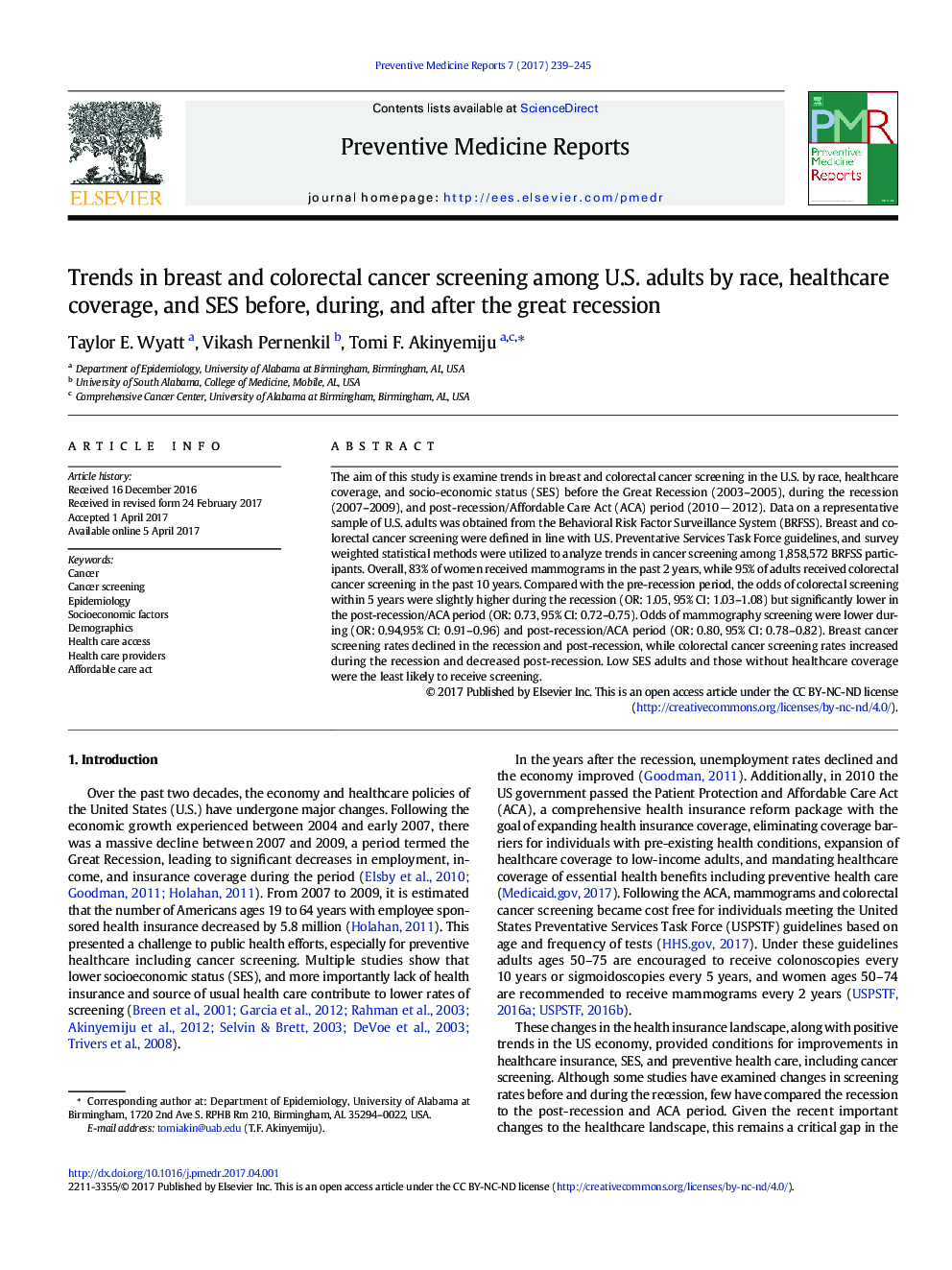| Article ID | Journal | Published Year | Pages | File Type |
|---|---|---|---|---|
| 5723730 | Preventive Medicine Reports | 2017 | 7 Pages |
â¢Breast cancer screening rates declined in the recession and post-recession periods.â¢Colorectal cancer screening rates increased in the recession and decreased post-recession.â¢Low SES adults and those without healthcare coverage were least likely to receive screening.
The aim of this study is examine trends in breast and colorectal cancer screening in the U.S. by race, healthcare coverage, and socio-economic status (SES) before the Great Recession (2003-2005), during the recession (2007-2009), and post-recession/Affordable Care Act (ACA) period (2010 â 2012). Data on a representative sample of U.S. adults was obtained from the Behavioral Risk Factor Surveillance System (BRFSS). Breast and colorectal cancer screening were defined in line with U.S. Preventative Services Task Force guidelines, and survey weighted statistical methods were utilized to analyze trends in cancer screening among 1,858,572 BRFSS participants. Overall, 83% of women received mammograms in the past 2 years, while 95% of adults received colorectal cancer screening in the past 10 years. Compared with the pre-recession period, the odds of colorectal screening within 5 years were slightly higher during the recession (OR: 1.05, 95% CI: 1.03-1.08) but significantly lower in the post-recession/ACA period (OR: 0.73, 95% CI: 0.72-0.75). Odds of mammography screening were lower during (OR: 0.94,95% CI: 0.91-0.96) and post-recession/ACA period (OR: 0.80, 95% CI: 0.78-0.82). Breast cancer screening rates declined in the recession and post-recession, while colorectal cancer screening rates increased during the recession and decreased post-recession. Low SES adults and those without healthcare coverage were the least likely to receive screening.
